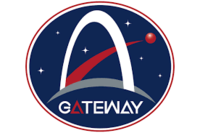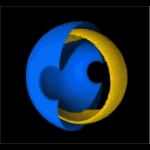Photos et clichés
Page 1 sur 22
Page 1 sur 22 • 1, 2, 3 ... 11 ... 22 
Arf, la navette n'avait pas mis son kit anti pollution pour ce vol :albino:

Fabien- Messages : 6862
Inscrit le : 23/09/2005
Age : 46
Localisation : Paris (75)
SpaceNut a écrit:Le décollage de Atlantis du 4 mai 1989 - STS-30 - prise d'un avion U-2.
Extraordinaire. On l'imagine en HiRes ...

Invité- Invité
un essai ... "public" de mise à feu de SSME.
Ambiance "Foire du trône", n'est-il pas ?
:)

Ambiance "Foire du trône", n'est-il pas ?
:)


Invité- Invité
SpaceNut a écrit:De nuit qui plus est !!!!
On sent le pop corn d'ici
:)

Invité- Invité
Il est manifestement à l'ouest de l'Indian River et le téléobjectif utilisé ne permet pas d'apprécier correctement les distances...
Il vaut mieux qu'il ait une autorisation s'il est dans l'espace aérien protégé du KSC et de Cap Canaveral !
KSC AREA AVIATION RESTRICTIONS
The airspace immediately above and around KSC will be limited to official aircraft only and will be off-limits to general aviation pilots prior to and during the launch of a Space Shuttle.
NOTAMS must be checked by pilots prior to flights near the KSC area. Pilots are warned that a violation of KSC's restricted airspace may likely result in serious penalties, including the suspension or revocation of pilot privileges.
Official aircraft supporting the launch will be in the air. Private pilots must be aware that wandering into a restricted area is not only forbidden, but that it also creates a safety hazard to support aircraft and the errant pilot.
Anyone wishing to view the launch from the air below 11,000 feet should stay west of the Indian River. Above 11,000 feet, pilots should stay west of the St. Johns River. Pilots are advised that the airspace in the KSC vicinity is expected to be congested with both controlled and uncontrolled aircraft.
Pilots should also be aware of the Solid Rocket Booster (SRB) exhaust cloud that occurs after launch. They should stay at least five miles away from the cloud, even if it drifts out of the restricted area.
Generally, the airspace restrictions cover a variety of air ranges. In addition to the usual KSC and Cape Canaveral Air Force Station airspace restrictions, the upcoming launch requires that all private aircraft stay out of an area roughly bounded by the west side of the Indian River to the west, the Trident Basin (Port Canaveral) to the south, 10 miles north of Haulover Canal at the Oak Hill, Fla., city limit and a minimum of 50 miles seaward to the east. These restrictions are "surface to unlimited." Launch-specific restrictions begin three hours prior to the planned launch time.
Pilots should consult the most recent editions of the Jacksonville Sectional Aeronautical Chart and the Airman's Information Manual. In addition, they should contact the St. Petersburg Flight Service Station at 1-800-992-7433 (1-800-WX-BRIEF). Advisories will be available from the Space Center Executive Airport Tower (VHF 118.9 megahertz) or the NASA Tower (128.55 megahertz).
Pilots should also refer to the current Patrick Air Force Base news release concerning restricted airspace.
NORAD Responds to Violation of Airspace July 26, 2005.
NORAD fighter jets responded to a Piper Cub that violated a FAA-established Temporary Flight Restriction zone over Kennedy Space Center today. Two F-16s were diverted from an irregular air patrol and intercepted the small general aviation-type aircraft within the restricted airspace during the 9-minute hold period of NASA?s countdown to launch. The fighters, assigned to Shaw Air Force Base, dispensed threes flares within restricted airspace to get the pilot's attention and then escorted the aircraft out of the restricted airspace to an airstrip approximately 50 miles north of Kennedy Space Center. After the Piper Cub landed, the F-16s returned to base.
Since Sept. 11, 2001, NORAD fighters have scrambled or diverted from air patrols in the U.S. Northern Command Area of Responsibility more than 2,000 times to respond to possible air threats, and have combined with Airborne Warning and Control System (AWACS) and air-to-air-refueling aircraft to fly more than 40,000 sorties.
Il vaut mieux qu'il ait une autorisation s'il est dans l'espace aérien protégé du KSC et de Cap Canaveral !
KSC AREA AVIATION RESTRICTIONS
The airspace immediately above and around KSC will be limited to official aircraft only and will be off-limits to general aviation pilots prior to and during the launch of a Space Shuttle.
NOTAMS must be checked by pilots prior to flights near the KSC area. Pilots are warned that a violation of KSC's restricted airspace may likely result in serious penalties, including the suspension or revocation of pilot privileges.
Official aircraft supporting the launch will be in the air. Private pilots must be aware that wandering into a restricted area is not only forbidden, but that it also creates a safety hazard to support aircraft and the errant pilot.
Anyone wishing to view the launch from the air below 11,000 feet should stay west of the Indian River. Above 11,000 feet, pilots should stay west of the St. Johns River. Pilots are advised that the airspace in the KSC vicinity is expected to be congested with both controlled and uncontrolled aircraft.
Pilots should also be aware of the Solid Rocket Booster (SRB) exhaust cloud that occurs after launch. They should stay at least five miles away from the cloud, even if it drifts out of the restricted area.
Generally, the airspace restrictions cover a variety of air ranges. In addition to the usual KSC and Cape Canaveral Air Force Station airspace restrictions, the upcoming launch requires that all private aircraft stay out of an area roughly bounded by the west side of the Indian River to the west, the Trident Basin (Port Canaveral) to the south, 10 miles north of Haulover Canal at the Oak Hill, Fla., city limit and a minimum of 50 miles seaward to the east. These restrictions are "surface to unlimited." Launch-specific restrictions begin three hours prior to the planned launch time.
Pilots should consult the most recent editions of the Jacksonville Sectional Aeronautical Chart and the Airman's Information Manual. In addition, they should contact the St. Petersburg Flight Service Station at 1-800-992-7433 (1-800-WX-BRIEF). Advisories will be available from the Space Center Executive Airport Tower (VHF 118.9 megahertz) or the NASA Tower (128.55 megahertz).
Pilots should also refer to the current Patrick Air Force Base news release concerning restricted airspace.
NORAD Responds to Violation of Airspace July 26, 2005.
NORAD fighter jets responded to a Piper Cub that violated a FAA-established Temporary Flight Restriction zone over Kennedy Space Center today. Two F-16s were diverted from an irregular air patrol and intercepted the small general aviation-type aircraft within the restricted airspace during the 9-minute hold period of NASA?s countdown to launch. The fighters, assigned to Shaw Air Force Base, dispensed threes flares within restricted airspace to get the pilot's attention and then escorted the aircraft out of the restricted airspace to an airstrip approximately 50 miles north of Kennedy Space Center. After the Piper Cub landed, the F-16s returned to base.
Since Sept. 11, 2001, NORAD fighters have scrambled or diverted from air patrols in the U.S. Northern Command Area of Responsibility more than 2,000 times to respond to possible air threats, and have combined with Airborne Warning and Control System (AWACS) and air-to-air-refueling aircraft to fly more than 40,000 sorties.


Invité- Invité


Invité- Invité


Invité- Invité
je suis en train de rechercher un cliché formidable pris par Mituci, commandant de bord, depuis son cockpit, d'un départ de fusée à Cap Canaveral, distant d'environ 30 km. Il l'avait publiée sur zoo-logique/images.aviation.
Il faut que je fouille ...
Il faut que je fouille ...

Invité- Invité
[quote="SpaceNut"]Une photo de Richard Hardoon. STS-98.
Merveilleux
Merveilleux

Invité- Invité
je suis en train de rechercher un cliché formidable pris par Mituci, commandant de bord, depuis son cockpit, d'un départ de fusée à Cap Canaveral, distant d'environ 30 km. Il l'avait publiée sur zoo-logique/images.aviation.
Il faut que je fouille ...
Voilà, trouvé.
Photo de Mitucci prise depuis le poste de pilotage de son 747 le 19 mai 2004.
Lancement de AMC-11 par une Atlas-2 AS.
Je cite la légende Mitucci :
" Hier, travers Cap Canaveral, vue de 30 000 ft, elle a dépasé notre altitude en quelques secondes avant la séparation du premier étage ... "


Invité- Invité
SpaceNut a écrit:La Santa Maria, la Pinta et la Nina au large du Centre Spatial Kennedy !
Joli !
:)

Invité- Invité
Les trois répliques ont été construites par l’Espagne et ont fait la traversée à l’occasion de 500 ème anniversaire du premier voyage de Christophe Colomb.
Oui, c'est Endeavour qui est sur le Pad ! "Attendant" son premier vol dans l'espace !
Oui, c'est Endeavour qui est sur le Pad ! "Attendant" son premier vol dans l'espace !
Page 1 sur 22 • 1, 2, 3 ... 11 ... 22 
 Sujets similaires
Sujets similaires» La fusée qui ramène des clichés
» [Photos du mois] les photos gagnantes
» Photos !
» Apollo 8 (1968)
» [STS-135, vol final] Suivi du lancement d'Atlantis (08/07/11 à 15h26 GMT)
» [Photos du mois] les photos gagnantes
» Photos !
» Apollo 8 (1968)
» [STS-135, vol final] Suivi du lancement d'Atlantis (08/07/11 à 15h26 GMT)
Page 1 sur 22
Permission de ce forum:
Vous ne pouvez pas répondre aux sujets dans ce forum
 Portail
Portail

 Lun 17 Avr 2006 - 9:15
Lun 17 Avr 2006 - 9:15










